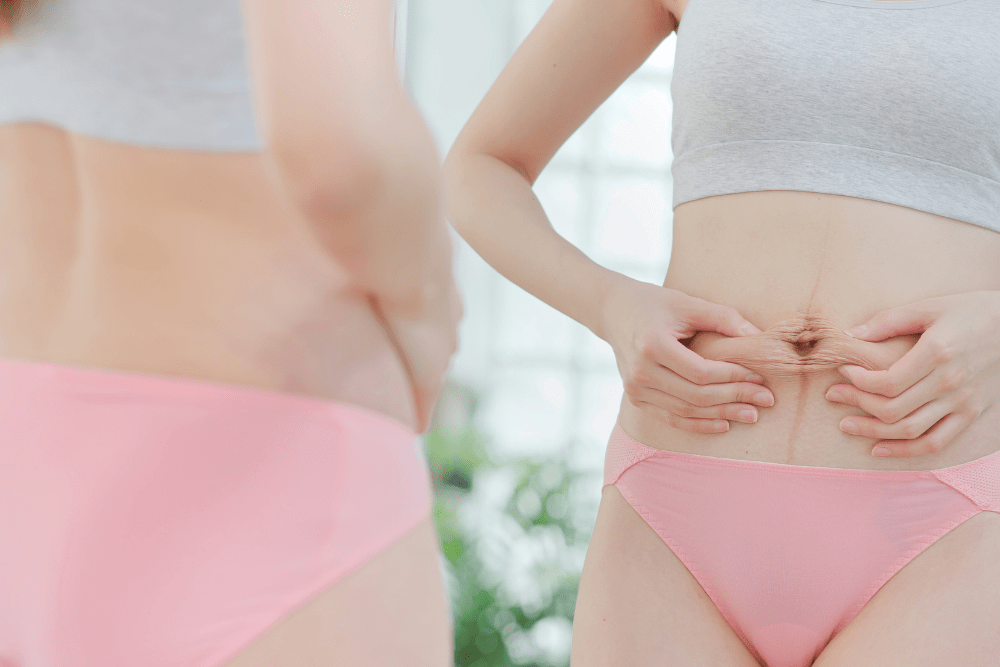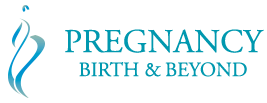
The pressure in society upon women to have the ‘ideal’ figure is great. Every week leading media outlets release magazines full of pictures of celebrities sporting flat stomachs, toned muscles and winning smiles. While as a group we can lay claim to a firm belief that the female body is beautiful in any form, there are still many women who look at these images and consider their own bodies inferior by comparison.
Pregnant and postpartum women are not immune to these media campaigns. With a fair degree of regularity, those same leading magazines post stories that glorify the transformation of celebrities after pregnancy. These images are invariably accompanied by sensationalised headlines quantifying just how quickly a celebrity has ‘bounced back’. Pregnant and postpartum women alike are battered by headlines. All lines send one clear message – your postpartum body shape is a problem to be solved, and fast!
Like all stereotypes though, there are underlying messages in these images which go beyond the demands of achieving a toned and terrific Yummy Mummy body within weeks of giving birth. The subtext here is that the postpartum body is unhealthy, like an overweight or obese body perhaps. In addition, messages about success as a mother and having control over your life are delivered – if you can’t achieve the ‘bounce back,’ this says something about you as a person and as a mother… and it isn’t good.
On exceptionally rare occasions we see images of a celebrity said to be ‘embracing’ their postpartum shape.
While on the surface we could exemplify these women as the voice of reason in what really is an insane expectation of society, the stories which follow the images generally reinforce rather than debunk the stereotype.
These stories usually have the air of ‘giving in’ about them and include photos that deliberately accentuate stretch marks, cellulite or clothing considered ‘frumpy.’ The message is clear here. This woman has ‘given up’ on looking great. There are often also conflicting messages delivered by the celebrity themselves which include ‘tricks’ they are using to ‘appear’ as though they are bouncing back – the use of foundation underwear for example to ‘hide’ or ‘suck in’ all those ‘unattractive bits’.
In recent times breastfeeding has also featured in many celebrity media stories. But rather than promoting the ‘breast is best for babies’ message, breastfeeding is often offered as the ‘trick’ to accelerated weight loss. Ironically this message is the one that is closest to the biological truth. The truth about why a pregnant body lays down the nutritional stores which the media points its finger at and calls ‘fat bits.’ However, this biological truth is lost in the get-thin-quick message. Often too, the mention of breastfeeding also carries with it a message of sexualisation – those enlarged breastfeeding boobs make that thin body look even sexier!
There is little we can do to prevent the media’s glorification of thin as beautiful and of the postpartum body as an unhealthy and unattractive state to be overcome. The reality is that celebrity ‘bouncing back’ stories sell magazines in the billions. However, there is much that can be done to educate pregnant and postpartum women about the purpose of their postpartum body in supporting both their own recovery and their baby’s early development.
Just as our pregnant and birthing bodies change to support the process of reproduction, the postpartum body changes in the weeks that follow birth as it switches from nurturing the baby within to nurturing the baby without. Mother Nature does not lay ‘fat’ on the pregnant form so she can point and laugh while you struggle to lose it afterwards.
Our postpartum bodies draw on the valuable nutritional stores laid down during pregnancy.
This is to support the demands that breastfeeding, sleep deprivation and the rigours of parenting an infant (and possibly other children) place on the body. In short, we are not meant to look toned and svelte a few weeks or even a few months after giving birth. To achieve this would require the placement of immense strain on a body that has just experienced birth. It would also rob us of those nutritional stores we need for the weeks and months that follow birth.
This is the message that caregivers, educators and women at large need to deliver loud and strong to all pregnant and postpartum women. Your postpartum form is neither unhealthy nor unattractive. It is proof positive of the power of the female form in nurturing a baby before and after birth, upon which you can draw as you begin life as a new mother.
Revised on 3rd December 2021

 Wish List
Wish List
Recent Comments